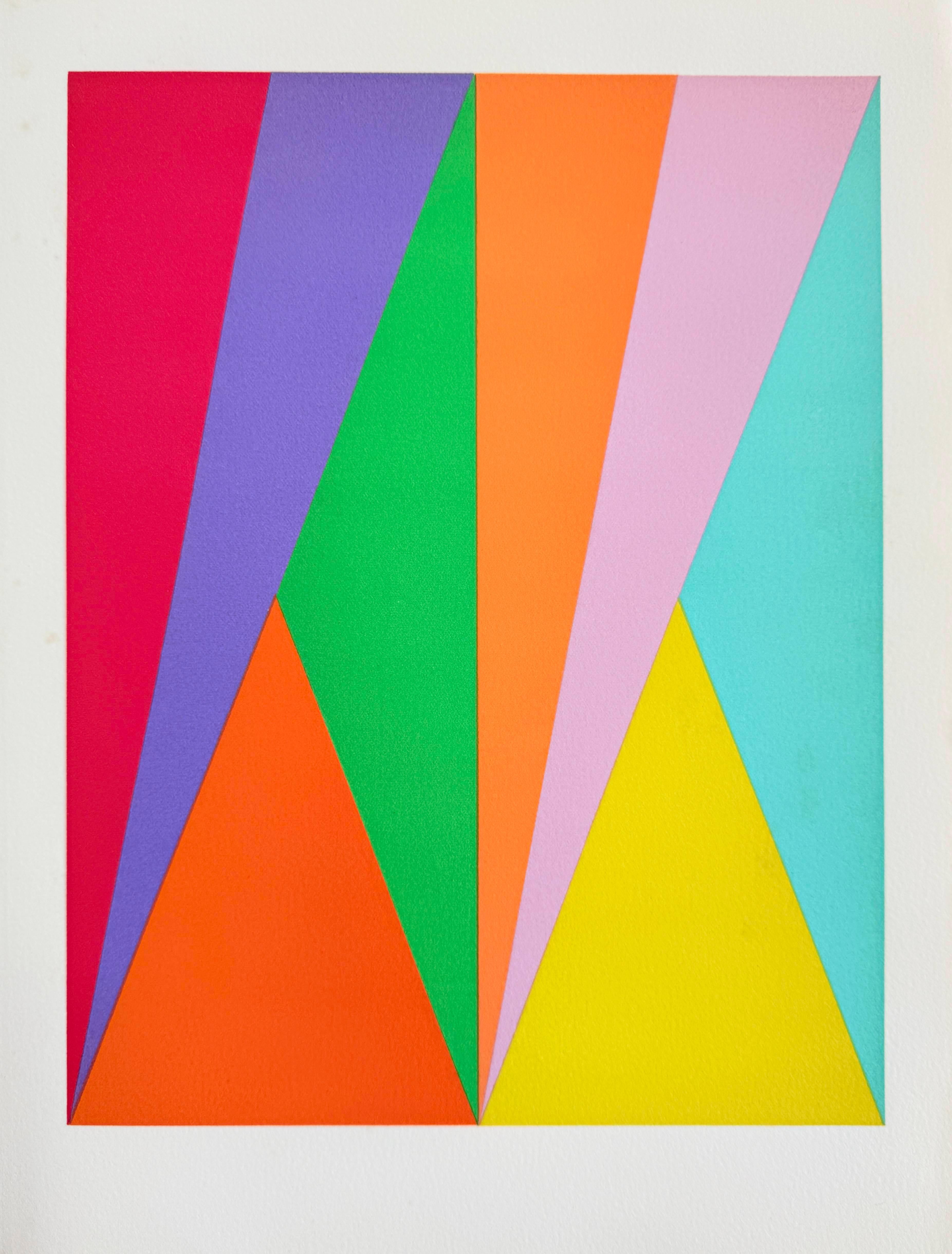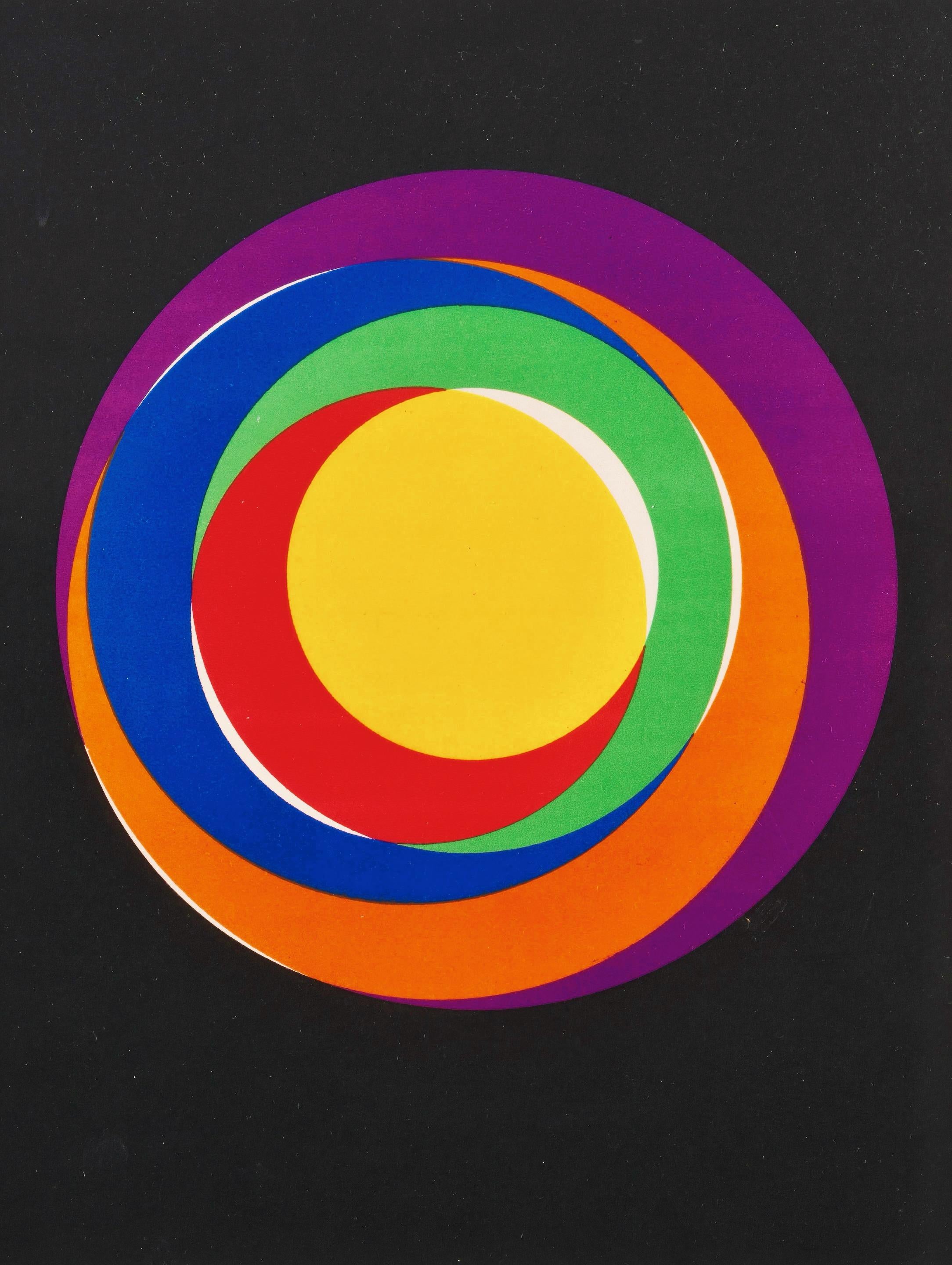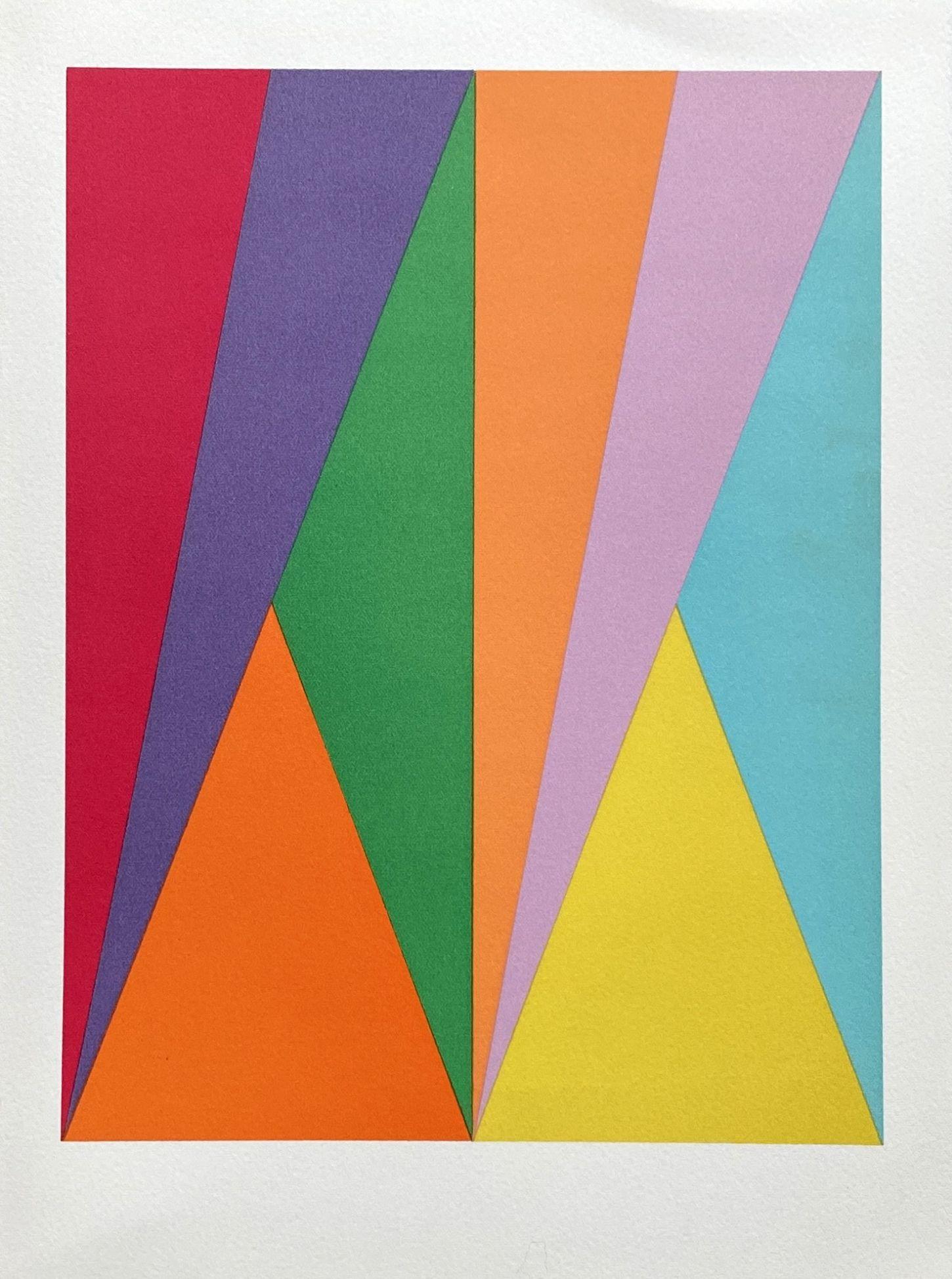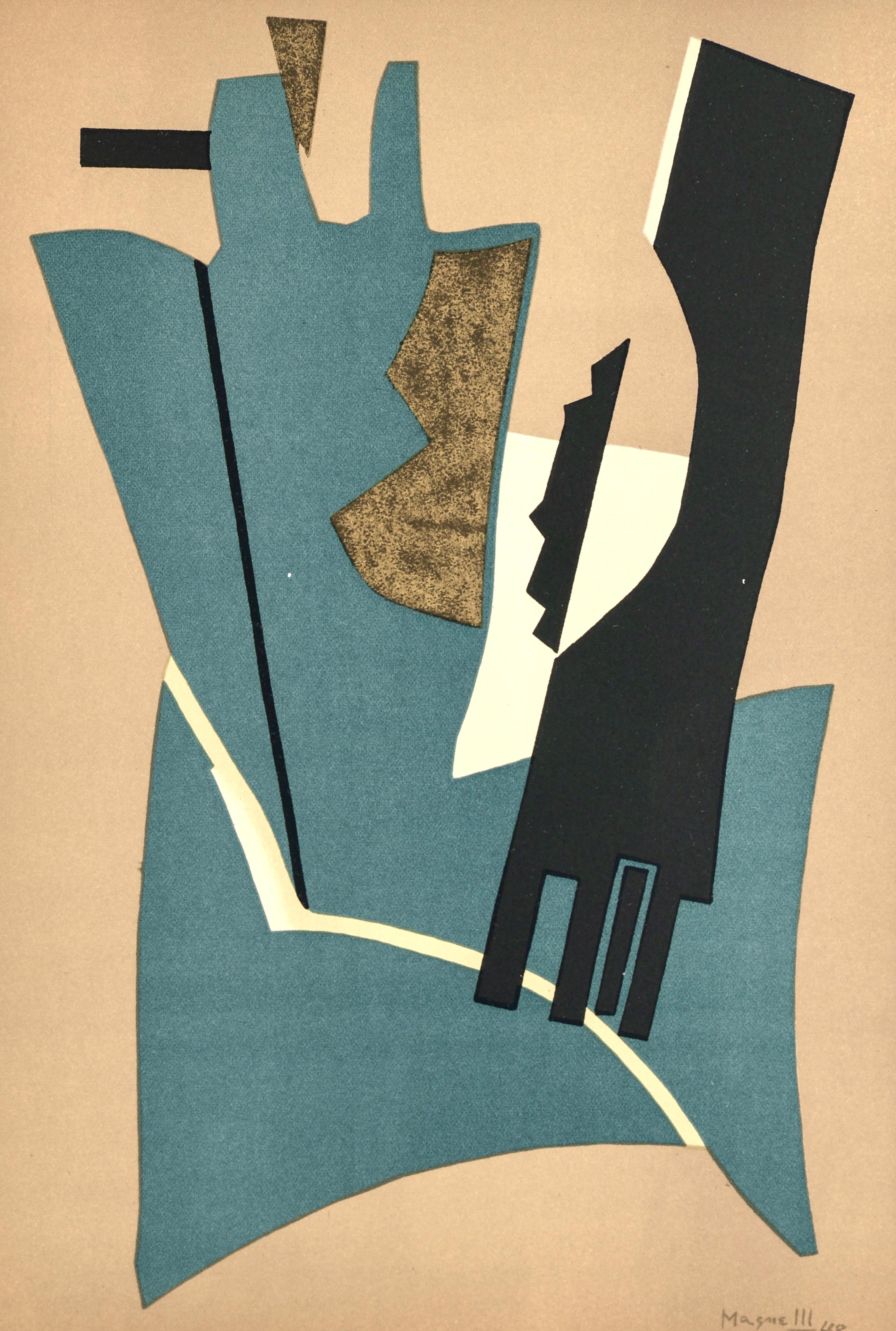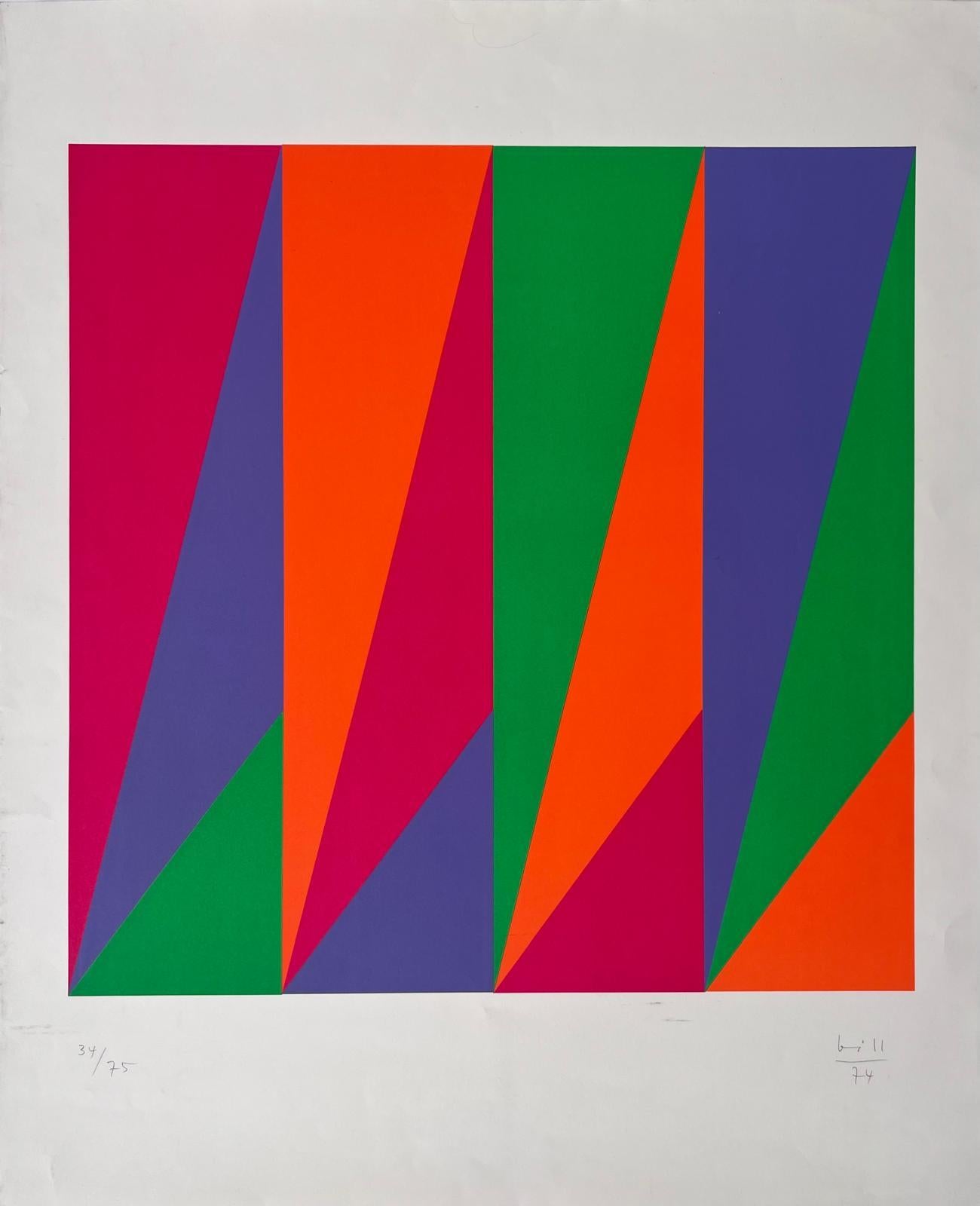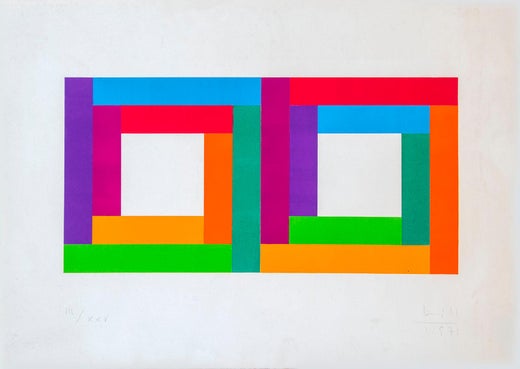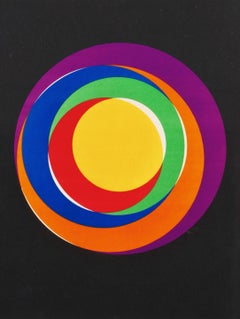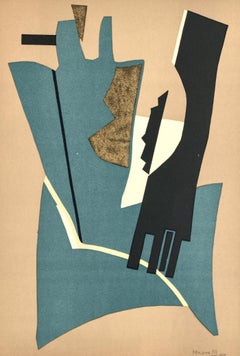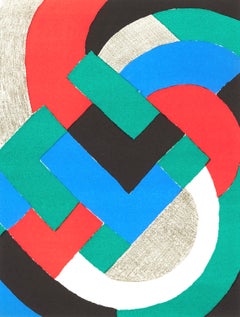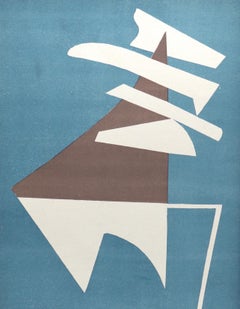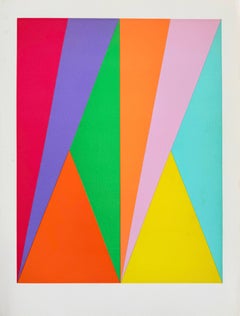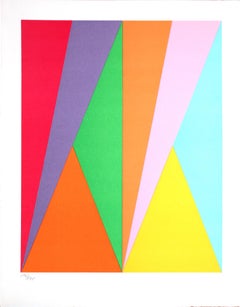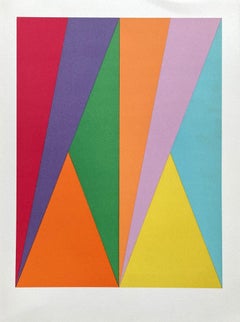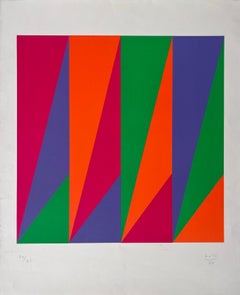Lithograph on vélin d'Arches paper. Paper Size: 14 x 10.5 inches. Inscription: Unsigned and unnumbered, as issued. Notes: From the album, San Lazzaro et ses Amis, Hommage au fondateur de la revue XXe siècle, 1975. Published by XXe siècle, Paris; printed by Mourlot Frères, Paris, October, 1975. Excerpted from the folio (translated from French), Finished printing in Paris in October 1975. This album has been printed on vélin d'Arches in DLXXV numbered examples. The LXXV original examples include a series of VIII original lithographs, signed and numbered by the artists. In addition, LV examples were printed for artists, authors, friends and collaborators of XXe siècle. The typography is from l'Imprimerie Union in Paris; the lithographs of Max Bill, Marc Chagall, Hans Hartung, Braque, Fontana, Magnelli, Picasso, Magritte and Poliakoff were printed by Fernand Mourlot in Paris; those of Alexander Calder and Joan Miró by l'imprimerie Arte in Paris; that of Max Ernst by Pierre Chave in Vence; that of Zao Wou-ki by ateliers Bellini in Paris; and that of Henry Moore by the Curwen Studio in London. Additional notes: Excerpted from the academic article, “Promoting Original Prints, The Role of Gualtieri di San Lazzaro and XXe Siècle” by Valerie Holman, published in Print Quarterly, XXXIII, 2016, 2, Until recently very little has been written on the Italian author and art publisher Gualtieri di San Lazzaro (1904-75), yet for 50 years he chronicled the life and work of contemporary artists, produced monographs of exceptional quality, and disseminated original prints by modern painters and sculptors through his best-known periodical, XXe Siècle. Although still a relatively unfamiliar figure in the United Kingdom, San Lazzaro is one of the half-dozen great art publishers of the mid-twentieth century who, together with his exemplar, Ambroise Vollard (1866-1939), and those of his own generation, Christian Zervos (1889-1970), Tériade (1889-1983) and Albert Skira (1904-73), chose to base himself in Paris, seeing it throughout his life as the centre of the art world….XXe Siècle, an illustrated periodical, was launched in 1938 and printed in editions of approximately 2,000, each issue containing both photographs and four-colour separation reproductions across a wide spectrum of visual imagery ranging from masterpieces of Western painting to popular prints from the Far East. Its large format, lively design, and close integration of text and image, were immediately striking, but its most innovative feature, introduced at the suggestion of Hans Arp (1886-1966), was the inclusion of original prints by contemporary artists in every issue. With obvious appeal for collectors, XXe Siècle was also designed to introduce a wider, international public to contemporary painting and sculpture through good quality colour reproductions and the immediacy of original prints. Comparable in price to Cahiers d'Art, early issues of XXe Siècle sold out rapidly. While San Lazzaro's own aesthetic preferences tended towards lyric abstraction, he made clear that XXe Siècle was non-partisan [publication ceased during World War II]….in 1951, San Lazzaro relaunched XXe Siècle with thematic issues that were materials based, or centred on a topic of current interest in the visual arts, particularly in Europe: concepts of space, matter, monochrome, mark-making and the sign.' A defining feature of the new series was Italy's artistic dialogue with France for, while San Laz-zaro had originally concentrated on Paris-based painters and sculptors, his aim was to create an international network, to make known the work of French artists in Italy and Italian artists in France, and subsequently extend this bilateral axis to the English-speak-ing world. The artists represented in No. I by an original print were all best known as sculptors: Arp, Laurens, Henry Moore (1898-186) and Marino Marini, San Lazzaro not only sought to show readers the full range of an artist's work, but to encourage the production of prints, a stimulus much appreciated, for example, by Magnelli…. Suffering from failing health, in 1968 San Lazzaro lost overall control of XXe Siècle to Léon Amiel, a printer-publisher who had provided financial backing and helped with distribution in America." Thematic issues now ceased and were replaced by a 'panorama' of the year, but San Lazzaro was still active as a publisher of books and albums of prints….Shortly after his death, San Lazzaro himself was the subject of two exhibitions: 'Omaggio a XXe Siècle' in Milan in December 1974 centred on graphic work by those artists closest to him late in life, while 'San Laz-zaro et ses Amis' at the Musée d'Art Moderne de la Ville de Paris in 1975 featured work by all those whose work he had promoted for more than 50 years: Arp, Calder (1898-1976), Capogrossi, Chagall, Sonia Delau-nay, Dubuffet, Estève, Lucio Fontana (1899-1968), Gili-oli (1911-77), Magnelli, Marini, Miró, Moore and Poliakoff. This exhibition was seen by one of his closest colleagues as an indirect portrait of San Lazzaro, a complex man whose modesty and reserve masked his unremitting drive to extend international appreciation of contemporary art, and to bring the reading public closer to its making through the medium of print.
MAX BILL (1908-1994) was a Swiss architect, artist, painter, typeface designer, industrial designer and graphic designer. After working on graphic designs for the few modern buildings being constructed, he built his first work, his own house and studio (1932–3) in Zurich-Höngg. From 1937 onwards he was a prime mover behind the Allianz group of Swiss artists. Bill is widely considered the single most decisive influence on Swiss graphic design beginning in the 1950s with his theoretical writing and progressive work. His connection to the days of the Modern Movement gave him special authority. As an industrial designer, his work is characterized by a clarity of design and precise proportions. Examples are the elegant clocks and watches designed for Junghans, a long-term client. Among Bill's most notable product designs is the "Ulmer Hocker" of 1954, a stool that can also be used as a shelf element, a speaker's desk, a tablet or a side table. Although the stool was a creation of Bill and Ulm school designer Hans Gugelot, it is often called "Bill Hocker" because the first sketch on a cocktail napkin was Bill's work. As a designer and artist, Bill sought to create forms which visually represent the New Physics of the early 20th century. He sought to create objects so that the new science of form could be understood by the senses: that is as a concrete art. Thus Bill is not a rationalist – as is typically thought – but rather a phenomenologist. One who understands embodiment as the ultimate expression of a concrete art. In this way he is not so much extending as re-interpreting Bauhaus theory. Yet curiously Bill's critical interpreters have not really grasped this fundamental issue. He made spare geometric paintings and spherical sculptures, some based on the Möbius strip, in stone, wood, metal and plaster. His architectural work included an office building in Germany, a radio studio in Zurich, and a bridge in eastern Switzerland. He continued to produce architectural designs, such as those for a museum of contemporary art (1981) in Florence and for the Bauhaus Archive (1987) in Berlin. In 1982 he also entered a competition for an addition to the Neue Nationalgalerie in Berlin, built to a design by Mies van der Rohe. Pavillon-Skulptur (1979–83), a large granite sculpture, was installed adjacent to the Bahnhofstrasse, Zürich in 1983. As is often the case with modern art in public places, the installation generated some controversy. Endlose Treppe (1991), a sculpture made of North American granite, was designed for the philosopher Ernst Bloch. In 1982 he was awarded the Sir Misha Black award and was added to the College of Medallists. In 2010, Max Bill’s sculpture, Zwilling als Viertelkuge, sold for $484,321 USD at Grisebach GmbH, setting a world record for the artist.
